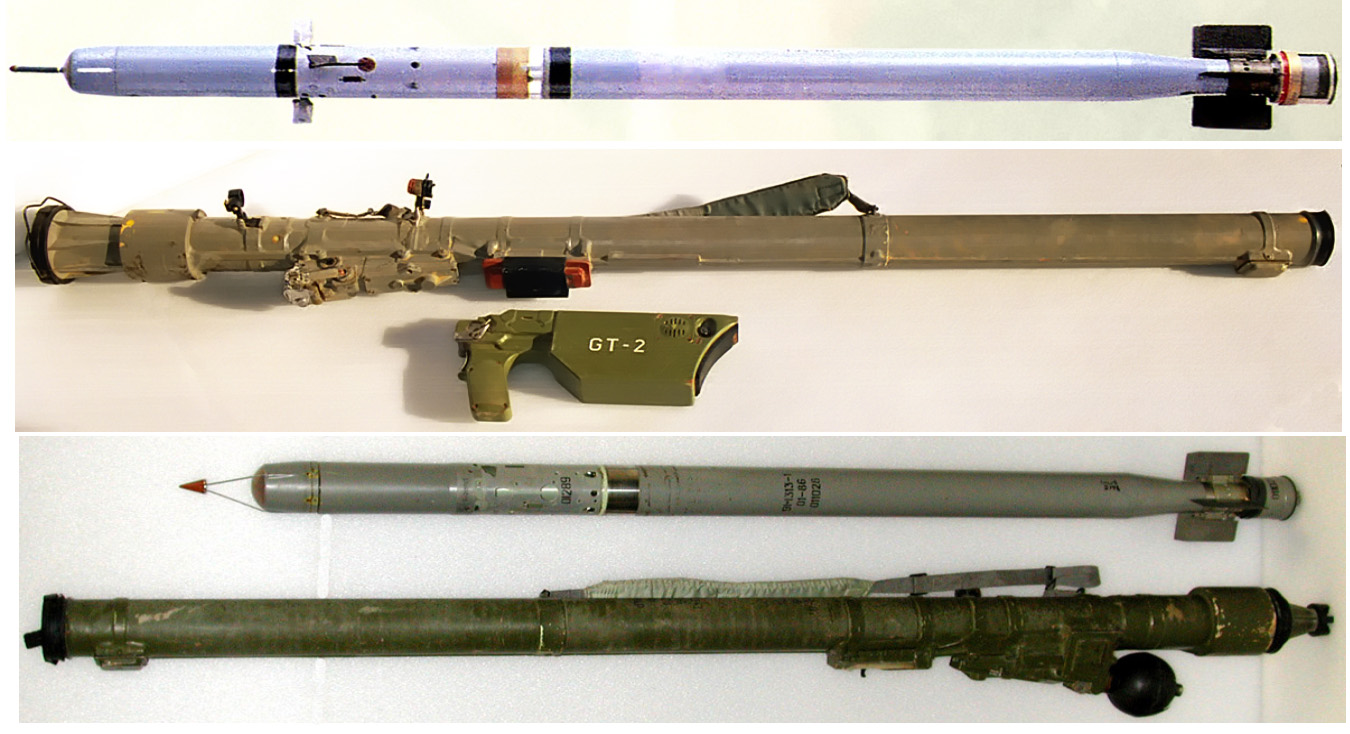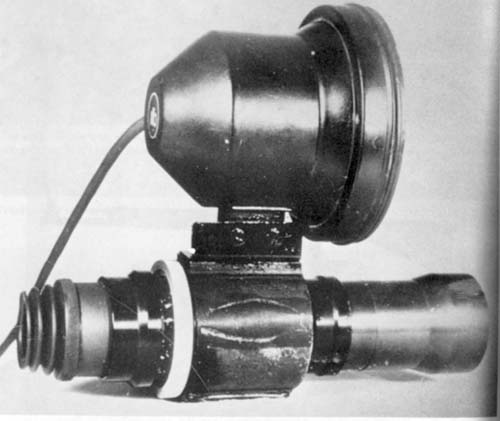|
MANPADS
Man-portable air-defense systems (MANPADS or MPADS) are portable shoulder-launched surface-to-air missiles. They are guided weapons and are a threat to low-flying aircraft, especially helicopters and also used against low-flying cruise missiles. These short-range missiles can also be fired from vehicles, tripods, weapon platforms, and warships. Overview MANPADS were developed in the 1950s to provide military ground forces with protection from jet aircraft. They have received a great deal of attention, partly because armed terrorist groups have used them against commercial airliners. These missiles, affordable and widely available through a variety of sources, have been used successfully over the past three decades, both in military conflicts, by militant groups, and by terrorist organizations. Twenty-five countries, including China, Iran, Poland, Russia, Sweden, the United Kingdom and the United States produce man-portable air defense systems.CRS RL31741 page 1 Possession, ... [...More Info...] [...Related Items...] OR: [Wikipedia] [Google] [Baidu] |
SA-16 And SA-18 Missiles And Launchers
The 9K38 Igla (, "needle", NATO reporting name SA-18 Grouse) is a Soviet/Russian man-portable infrared homing surface-to-air missile (SAM) system. A simplified, earlier version is known as the 9K310 Igla-1 (NATO: SA-16 Gimlet), and the latest variant is the 9K338 Igla-S (SA-24 Grinch). The Igla-1 entered service in 1981, the Igla in 1983, and the Igla-S in 2004. The Igla has been supplemented by the 9K333 Verba since 2014.New Russian Verba MANPADS will replace Igla-S - Armyrecognition.com, 15 September 2014 History The development of the Igla short-range man-portable air defense system ( |
Sa-7
The 9K32 Strela-2 (; NATO reporting name SA-7 Grail) is a light-weight, shoulder-fired, surface-to-air missile or MANPADS system. It is designed to target aircraft at low altitudes with passive infrared-homing guidance and destroy them with a high-explosive warhead. Broadly comparable in performance with the US Army FIM-43 Redeye, the Strela-2 was the first Soviet man-portable SAM – full-scale production began in 1970. While the Redeye and 9K32 Strela-2 were similar, the missiles were not identical. The Strela-2 was a staple of the Cold War and was produced in huge numbers for the Soviet Union and their allies, as well as revolutionary movements. Though since surpassed by more modern systems, the Strela and its variants remain in service in many countries, and have seen use in nearly every regional conflict since 1972. Development The end of World War II led to a major shift in Soviet defence policy. The advent of long range, high altitude, nuclear-armed American bom ... [...More Info...] [...Related Items...] OR: [Wikipedia] [Google] [Baidu] |
9K32 Strela-2
The 9K32 Strela-2 (; NATO reporting name SA-7 Grail) is a light-weight, shoulder-fired, surface-to-air missile or MANPADS system. It is designed to target aircraft at low altitudes with passive infrared homing, infrared-homing guidance and destroy them with a high-explosive warhead. Broadly comparable in performance with the United States Army, US Army FIM-43 Redeye, the Strela-2 was the first Soviet Union, Soviet man-portable SAM – full-scale production began in 1970. While the Redeye and 9K32 Strela-2 were similar, the missiles were not identical. The Strela-2 was a staple of the Cold War and was produced in huge numbers for the Soviet Union and their allies, as well as revolutionary movements. Though since surpassed by more modern systems, the Strela and its variants remain in service in many countries, and have seen use in nearly every regional conflict since 1972. Development The end of World War II led to a major shift in Soviet defence policy. The advent of long r ... [...More Info...] [...Related Items...] OR: [Wikipedia] [Google] [Baidu] |
FIM-92 Stinger
The FIM-92 Stinger is an American man-portable air-defense system (MANPADS) that operates as an infrared homing surface-to-air missile (SAM). It can be adapted to fire from a wide variety of ground vehicles, and from helicopters and drones as the Air-to-Air Stinger (ATAS). It entered service in 1981 and is used by the militaries of the United States and 29 other countries. It is principally manufactured by Raytheon Missiles & Defense and is produced under license by Airbus Defence and Space in Germany and by Roketsan in Turkey. Description The FIM-92 Stinger is a passive surface-to-air missile that can be shoulder-fired by a single operator (although standard military procedure calls for two operators team chief and gunner). The Stinger was intended to supplant the FIM-43 Redeye system, the principal difference being that, unlike the Redeye, the Stinger can acquire the target from head-on, giving much more time to acquire and destroy the target. The FIM-92B missile can also be f ... [...More Info...] [...Related Items...] OR: [Wikipedia] [Google] [Baidu] |
Mistral Missile
The Missile Transportable Anti-aérien Léger (English: Transportable lightweight anti-air missile), commonly called Mistral, is a French infrared homing short range air defense system manufactured by MBDA France (formerly by Matra Défense and then Matra BAe Dynamics). Based on the French SATCP (''Sol-Air à Très Courte Portée''), the development of the portable system later to become the Mistral began in 1974. The first version of the system was introduced in 1988 (S1), the second in 1997 (Mistral 2), and the third in 2018 (Mistral 3). Description Mistral is a short-range air defence (SHORAD) missile system that can be used from vehicles, surface ships, and helicopters, as well as in a portable configuration. The "Mistral" missile is transported in a transport and launch container (MPC) together with "friend or foe" interrogator, power source and tripod with its sighting devices. It differs from MANPADS systems in that it is necessarily fired from a structure bringing ... [...More Info...] [...Related Items...] OR: [Wikipedia] [Google] [Baidu] |
Surface-to-air Missile
A surface-to-air missile (SAM), also known as a ground-to-air missile (GTAM) or surface-to-air guided weapon (SAGW), is a missile designed to be launched from the ground or the sea to destroy aircraft or other missiles. It is one type of anti-aircraft warfare, anti-aircraft system; in modern armed forces, missiles have replaced most other forms of dedicated anti-aircraft weapons, with anti-aircraft guns pushed into specialized roles. The first attempt at SAM development took place during World War II, but no operational systems were introduced. Further development in the 1940s and 1950s led to operational systems being introduced by most major forces during the second half of the 1950s. Smaller systems, suitable for close-range work, evolved through the 1960s and 1970s, to modern systems that are man-portable. Shipborne systems followed the evolution of land-based models, starting with long-range weapons and steadily evolving toward smaller designs to provide a layered defence. T ... [...More Info...] [...Related Items...] OR: [Wikipedia] [Google] [Baidu] |
HN-5
The HN-5 (; NATO reporting name: CH-SA-3) is a family of first generation Chinese man-portable air-defense systems ( MANPAD) based on Soviet technology. The HN abbreviation is used to avoid confusion with the HY (Hai Ying, or Sea Eagle) series anti-ship missiles of the Silkworm missile family. The HN-5 series in Chinese hands has been phased out in front-line and first line reserve units by QW series MANPAD, but still being used by militia units. Development The HN-5 is a reverse-engineered version of the Soviet Strela 2 (SA-7). Due to the urgent need for MANPADs, North Vietnam provided China with an original sample during the Vietnam War and asked China to produce and supply NVA with copies. However, due to the political turmoil in China, namely, the Cultural Revolution, the reverse-engineering process was slow and by the time the first small production batch was sent to Vietnam for evaluation, the results were ineffective because American aircraft has already adopt ... [...More Info...] [...Related Items...] OR: [Wikipedia] [Google] [Baidu] |
Shoulder-launched Missile
Shoulder-fired missile, shoulder-launched missile or man-portable missile, among other variants, are common slang terms to describe high-caliber shoulder-mounted weapons systems; that is, weapons firing large, heavy projectiles ("missiles"), typically using the backblast principle, which are small enough to be carried by a single person and fired while held on one's shoulder. The word "missile" in this context is used in its original broad sense of a heavy projectile, and encompasses all shells and rockets, guided or unguided (compare with guided missile). A more formal variant is simply ''shoulder-fired weapons system'' and the like. Shoulder-launched weapons may be guided or unguided, and the systems can either be disposable, such as the Panzerfaust 1, M72 LAW, AT4, etc., or reusable, such as the Panzerfaust 2, Carl Gustaf 8.4 cm recoilless rifle, RPG-7, etc. Some systems are classified as semi-disposable, such as the Panzerfaust 3. Slang nicknames In many instanc ... [...More Info...] [...Related Items...] OR: [Wikipedia] [Google] [Baidu] |
9K34 Strela-3
The 9K34 Strela-3 (, 'arrow', NATO reporting name: SA-14 Gremlin) is a man-portable air defense missile system (MANPADS) developed in the Soviet Union as a response to the poor performance of the earlier 9K32 Strela-2 (SA-7 Grail) system. The missile was largely based on the earlier Strela 2, and thus development proceeded rapidly. The new weapon was accepted into service in the Soviet Army in January 1974. Description The most significant change over the Strela 2 was the introduction of an all-new infra-red homing seeker head. The new seeker worked on FM modulation (con-scan) principle, which is less vulnerable to jamming and decoy flares than the earlier AM (spin-scan) seekers, which were easily fooled by flares and even the most primitive infrared jammers. The new seeker also introduced detector element cooling in the form of a pressurized nitrogen bottle attached to the launcher. The effect of cooling was to expand the seeker's lead sulfide detector element's sensitivi ... [...More Info...] [...Related Items...] OR: [Wikipedia] [Google] [Baidu] |
FIM-43 Redeye
The General Dynamics FIM-43 Redeye is a man-portable surface-to-air missile system. It uses passive infrared homing to track its target. Production began in 1962 andin anticipation of the Redeye II, which later became the FIM-92 Stingerended in the early 1970s (production for the US Army continued until 1969. Afterwards, production was extended until 1973 to fulfill export orders) after about 85,000 rounds had been built. The Redeye was withdrawn gradually between 1982 and 1995 as the Stinger was deployed, though it remained in service with various armed forces of the world until quite recently, being supplied via the Foreign Military Sales program. It was initially banned from being sold overseas, to avoid missiles falling into the hands of terrorist organizations. However, after the export ban was lifted, the weapon was never actually used by terrorists against civil aircraft, in contrast with other MANPADS. While the Redeye and 9K32 Strela-2 (SA-7) were similar, the missiles wer ... [...More Info...] [...Related Items...] OR: [Wikipedia] [Google] [Baidu] |
Rosette Seeker
Infrared homing is a passive weapon guidance system which uses the infrared (IR) light emission from a target to track and follow it seamlessly. Missiles which use infrared seeking are often referred to as "heat-seekers" since infrared is radiated strongly by hot bodies. Many objects such as people, vehicle engines and aircraft generate and emit heat and so are especially visible in the infrared wavelengths of light compared to objects in the background. Infrared seekers are passive devices, which, unlike radar, provide no indication that they are tracking a target. That makes them suitable for sneak attacks during visual encounters or over longer ranges when they are used with a forward looking infrared or similar cueing system. Heat-seekers are extremely effective: 90% of all United States air combat losses between 1984 and 2009 were caused by infrared-homing missiles. They are, however, subject to a number of simple countermeasures, most notably by dropping flares behin ... [...More Info...] [...Related Items...] OR: [Wikipedia] [Google] [Baidu] |











